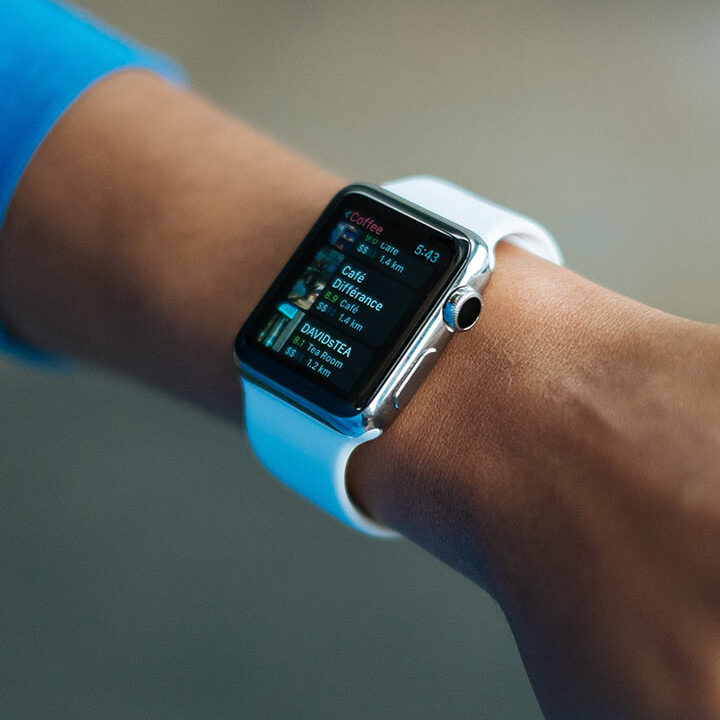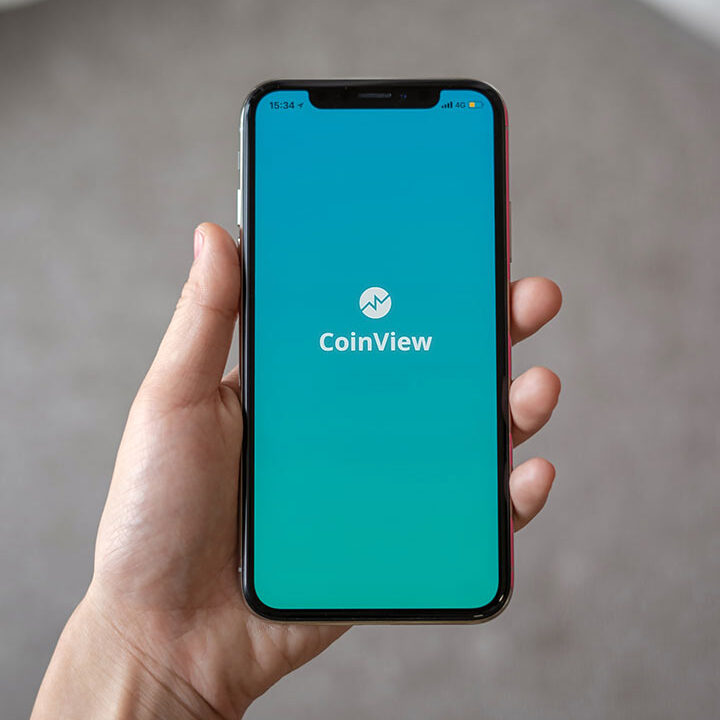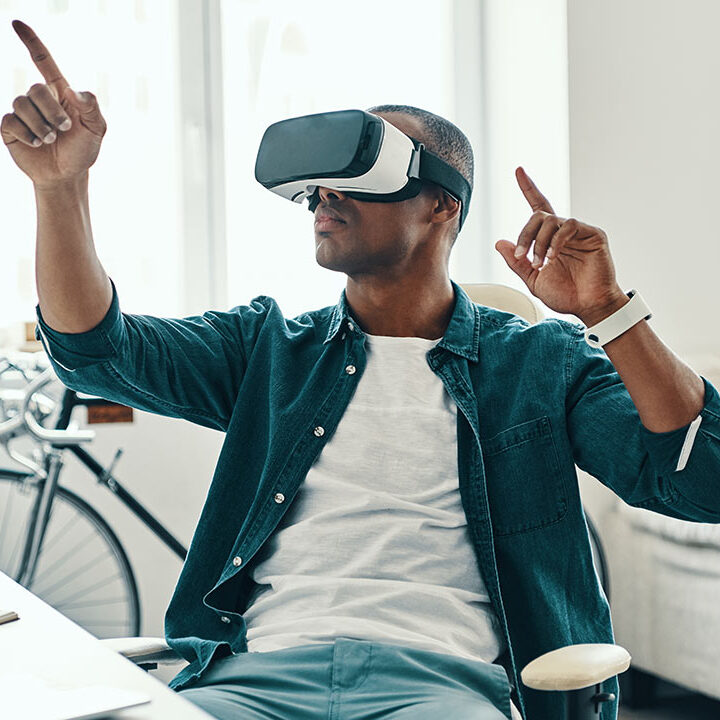Application development with voice user interfaces (VUI)
Voice User Interfaces (VUIs) have swiftly become a transformative force, reshaping how we interact with technology. In a world where statistics indicate a booming adoption of voice recognition technology, the voice and speech recognition market will reach $53.66 Billion by 2030; it’s evident that VUI applications are not just a passing trend but a fundamental shift in user interaction.
Table of Contents
Enchanting realities of VUI integration
You wake up, and with a simple spoken command, your room comes to life – lights gently illuminate, your favorite tune starts playing, and your coffee machine hums to perfection. This isn’t science fiction; it’s the enchanting reality crafted by voice interfaces technology, the architects of a harmonious interaction between you and your technology.
Defining VUIs
What is a Voice User Interface? It’s more than just a tool—it’s a system that allows users to communicate through spoken commands. Utilizing advanced Natural Language Processing (NLP) and speech recognition, VUIs turn every interaction into a seamless conversation, making technology more accessible and engaging.
From statistics to human stories:
- Grasping the Landscape: The daily engagement of smart speakers by 71 percent of owners extends beyond a mere statistic; it symbolizes the effortless assimilation of Voice User Interfaces (VUIs) into our daily existence. From setting reminders to streamlining grocery orders, VUIs have seamlessly woven into the fabric of our routines. Latest voice search statistics further illuminate this integration, revealing that 41% of adults in the United States conduct daily voice searches, translating to 135 million individuals. This underscores the pervasive relevance and ubiquity of VUIs in shaping the contemporary landscape of daily living.
- Human experiences beyond numbers: But beyond numbers, it’s the human experiences that truly define the future of voice user interfaces. Take Sarah, a busy professional who uses VUI to manage her schedule, streamlining tasks like ordering groceries and setting reminders. VUI isn’t just about convenience—it’s about fitting into the natural rhythm of our lives.
Inclusive VUI application development
- Developing VUI applications: As we delve into the world of Voice User Interface app development, challenges become apparent. Overcoming Natural Language Processing (NLP) hurdles is crucial. Envision creating a system that comprehends accents, dialects, and colloquial expressions – a formidable challenge. Yet, these challenges pave the way for groundbreaking solutions, ensuring that VUI applications are functional and inclusive
- Inclusive narratives: Step into the shoes of Alex, a visually impaired individual effortlessly navigating a smartphone through voice commands. His story isn’t just an anecdote; it’s a testament to the inclusivity that well-crafted VUI applications bring to our lives, turning challenges into harmonious solutions.
Decoding technical aspects of VUI development
- Breaking down technical jargon: Understanding the technical aspects of VUI development begins with Natural Language Processing (NLP), the brain of VUIs. When a user says, “Find nearby restaurants,” NLP processes the input, deciphers intent, and triggers the right response. This intelligence allows for conversational capabilities within Voice User Interface applications.
- Virtual ear of speech recognition: Speech recognition acts as the “virtual ear” of the system. It converts spoken words into text, enabling the voice interface technology to understand and respond to user commands. Together, NLP and speech recognition form the foundation of VUI, creating a smooth and intuitive interaction.
Clarity and directness in commands
- Voice and clarity: When designing a Voice User Interface, clarity is crucial. Users prefer concise responses to their queries. For example, instead of having the system respond with “Your weather information will be displayed shortly,” a more effective response would be a direct answer like, “The weather today is 75 degrees and sunny.” Clear, straightforward interactions improve user satisfaction by making the experience quicker and easier to understand.
- Intuitive banking experience: An intuitive banking app using VUI might allow users to check their balance or transfer funds through simple voice commands. Voice Interaction Design, when done well, combines ease of use with advanced functionality, improving the overall user experience.
Current and future perspectives
- Current landscape and touchless interfaces: Today’s Voice Interface Technology is evolving rapidly. We are already seeing a rise in touchless interfaces, allowing users to interact with technology without physically engaging with screens or buttons. This trend is reshaping how we think about user interaction and is making tech more accessible and versatile.
- Future integration with advanced technologies: As we gaze into the future, integrating VUIs with advanced technologies like AI and machine learning is set to redefine the user experience. The next frontier goes beyond command understanding; it encompasses applications that proactively anticipate user needs based on past interactions. This convergence heralds a landscape of innovation, creating personalized and efficient experiences that dynamically adapt to individual preferences over time.
Professionals predict that the smart speaker market will continue soar underscoring the anticipated growth and significance of VUIs in the coming years. The future promises a harmonious symphony of technology where VUIs orchestrate a personalized and adaptive digital experience for users globally.
Join the innovation wave with Novas Arc
Explore the potential of Voice User Interfaces (VUIs) with Novas Arc. Our experts are ready to help you advance VUIs in Application Development, ensuring seamless integration and enhanced user experiences. With deep expertise and experience, we focus on refining the landscape of VUI application development.
Connect with us to tap into our expertise and elevate your VUI technology. Let Novas Arc be your partner in driving advancements in Voice User Interfaces. Your path to innovation begins with a straightforward connection. Reach out to us no
FAQS
Q1. What is user interface in app development?
A user interface (UI) in app development is the space where interactions between humans and computers occur. It includes everything users see and interact with, such as buttons, menus, and icons. The goal of UI design is to make the app intuitive and easy to use, ensuring a seamless experience for users as they navigate and engage with the application.
Q2. What is an example of a VUI?
An example of a Voice User Interface (VUI) is Amazon’s Alexa. Users interact with Alexa by speaking commands, like asking for weather updates or playing music, and the VUI processes the speech to deliver the requested information or action. Other common examples include Apple’s Siri, and Google Assistant.
Q3. What is the voice user interface?
A Voice User Interface (VUI) allows users to interact with technology through spoken commands instead of traditional touch or type interfaces. VUIs use speech recognition and Natural Language Processing (NLP) to interpret voice inputs, making technology more accessible and intuitive. Examples include voice assistants, smart home devices, and voice-enabled apps.
Q4. What is the voice user interface (VUI) for smart home devices?
The Voice User Interface (VUI) for smart home devices enables users to control home devices like lights, thermostats, and security systems using voice commands. For instance, with a system like Amazon Alexa or Google Home, users can say, “Turn on the lights” or “Set the temperature to 72 degrees,” and the VUI processes the commands to perform these actions, creating a hands-free and convenient smart home experience.
Author








